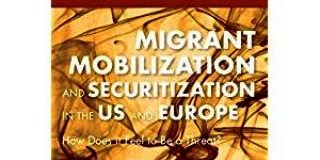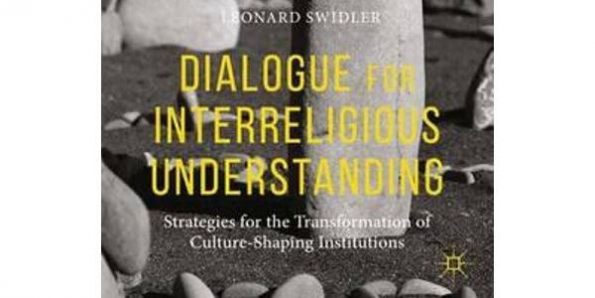
To Download click here.
How to Cite:
ERBIL, B. (2018), ‘BOOK REVIEW: Migrant Mobilization and Securitization in the US and Europe: How Does It Feel to Be a Threat?’, Journal of Global Analysis, 8(1): 88-90.
Ariane Chebel d’Appollonia
Migrant Mobilization and Securitization in the US and Europe: How Does It Feel to Be a Threat?
(New York, Palgrave Macmillan, 2015, ISBN: 978-1-137-38804-9, 224 pp., £65.00)
Migrant Mobilization and Securitization in the US and Europe: How Does It Feel to Be a Threat? comparatively examines complex relationship between securitization of immigration governance and reactions of immigrant and minority groups against securitized patterns of integration and mobilization from their perspectives on both sides of the Pacific in the wake of 9/11. Five chapters of the book respectively present useful insights into a better understanding of the intertwined links between securitization and discrimination (process of subjective and objective discrimination); securitization and integration ((non)conflicting expectations of the host countries and migrants); securitization and (un)conventional mobilization of the migrants as well as minority groups as a response to the security-driven policies. The book focuses on two interrelated questions; how securitization of immigration governance leads to paradoxical effects on the various forms of migrant mobilization in two continents and in what ways integration policies are subsequently affected by the impact of the challenges migrants face and resist.
Chebel d’Appollonia firstly introduces consequences of ‘the war on terror’ in the aftermath of 9/11 in the framework of securitization measures both in the United States (racial profiling, surveillance unit, militarization of border controls) and in EU countries (Counter-Terrorism Strategy Plans, anti-migrant media coverages, visa prohibitions, tougher immigration enforcement). Secondly, she discusses contested implementations of the concept of multiculturalism in different societies due to fears of disintegration and their changing effects on the perceptions of immigrants. It is observed that most migrants would like to engage in the host society’s culture in both sides of the Pacific and securitization of governance does not necessarily cause political distrust in the institutions, sense of alienation and radicalization for them. Until reaching to this conclusion, the author analyses the attitudes of Hispanics and Muslims in the United States over the years in comparison with the ones in Europe mostly using the survey data by focusing on separation between objective and subjective discrimination (perceived discrimination), the key role of subjective discrimination in inter-group relations and impacts of the discriminative security-driven policies on the integration of the migrants.
When comparing two main ‘excluded’ groups in both continents, the author makes a rigorous analysis of intragroup differences to explain ambivalent attitudinal and behavioural responses shown within the same group referring to ‘integration paradox’: the degree and preference of engagement in (non)conventional civic activities varies among first and second generation immigrants resulting from diversity in their migratory experiences and social capitals including but not limited to their level of education and fluency in language of the dominant culture. One of the striking results addressed by the author is negative correlation between the degree of integration of the groups and their perception of the host society. The more they are integrated, the less they have a positive image of the host society in terms of discrimination.
In relation to the contested reflections of the concept of integration, the book’s second finding is that political empowerment of immigrants and minorities on account of being targeted as a ‘threat’ plays a role to influence policy-making processes which can be interpreted as ‘de-securitizing’ effect. Based on the examples occurred in the United States and some European countries, the author argues that immigrants and minorities being the blatant object of securitization of the governance, can and do affect the discriminative implementations to secure their rights through voting, protests, lobbying, petitions etc.
The author successfully answers many questions by critically reviewing the empirical studies of migrant integration from different angles, yet the following points are worth mentioning. The concept of securitization is intrinsically accompanied by de-securitization. It operates based on the “Hegelian dialectical movement” (Burke, 2002:20); since each securitizing move inevitably gives birth to its opponent and this is indeed what the author unobservedly indicates when she argues the influential power of reactions of the migrants against the emerging restrictive practices of security governance, omission of revisiting the (un)conventional mobilization of the migrants and minority groups in the context of de-securitization except the conclusion chapter demonstrates one of the weaknesses of the book. Lack of attention in framing desecuritizing moves in detail lays the groundwork for its second shortcoming which is associated with the book’s last finding, namely likelihood of absence of democratic inclusion for some migrants and minorities due to various obstructs in the political systems preventing them from becoming ‘too active’ about defending their rights and cultural/religious values. The book could have elaborated on the clash of goals and actions by the state organs and migrants from desecuritization perspective to envisage palpable difficulties hindering political empowerment of the migrants and minorities to be improved. Finally, since the data used in the book generally predate the outbreak of Syrian civil war excluding the recent literature on the political and social changes in receiving countries particularly related to pre-entry regulations of Muslims, potential outdatedness of the book in the aftermath of Syrian refugee crisis appears as a major issue that might require a second edition in the near future.
Nevertheless, the author offers an in-depth analysis on the immigration topic to a wide range of readers including researchers in the field of politics, international relations and sociology due to its concise language and multidimensional approach of understanding of securitization and immigration nexus. Based on its significant contributions, the book would be useful for anyone who would like to acquire further knowledge in comparative studies in the context of security and alienation.
Berivan Erbil
MSc. in Global Studies,
University of Gothenburg
erbil.berivan@gmail.com
References:
Burke, Anthony. 2002. Aporias of Security. Alternatives: Global, Local, Political 27(1): 1-27



